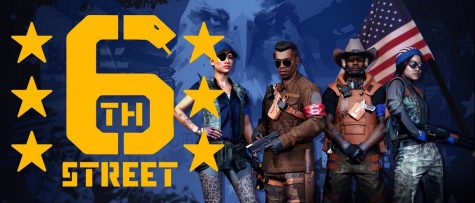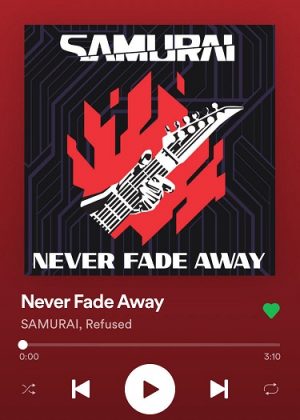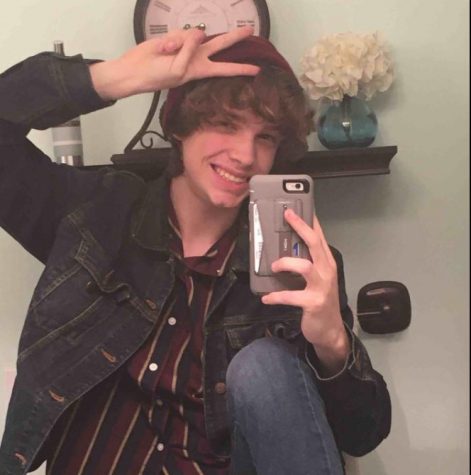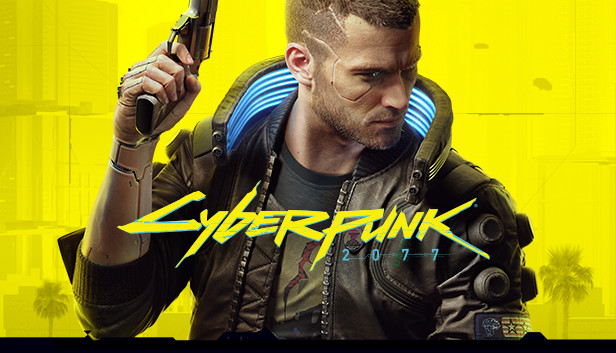The Cyberpunk 2077 Experience (Spoiler-Free)
An in-depth review in 2077 words
If you’re at all active in the gaming community, chances are you’ve heard of a game called Cyberpunk 2077, an adaptation/sequel to the 1988 tabletop game, Cyberpunk . The game was in development from 2012-2020. At the annual gaming convention E3 2018, small-time Polish developer CD Projekt Red (CDPR) unveiled a stellar demo of the open-world role-playing game (RPG), Cyberpunk 2077, and hype for the game skyrocketed. E3 2019 came with another big reveal: actor Keanu Reeves would be starring in the game as main character Johnny Silverhand. Some iconic moments from the presentation spawned a variety of Keanu-related memes that kept the hype train going until release day. Reeves announced the game would be released a year later, on April 16, 2020.

However, the game was hit with two delays, first to “perfect” the game, and again due to the COVID-19 pandemic. The most anticipated game of the year hit shelves on December 10, 2020, and fans… hated it. The game was filled with bugs, consistently lagged, suffered from frame rate drops, and even crashed. These problems were exacerbated if the game was being played on a last-gen console like the PS4 or Xbox One or a PC not meant for running high-end games. Since hitting their all-time high stock price of 31 USD/share on Dec. 4, just before release, the price has dropped nearly 45% at the time of writing this.
Despite these issues, among others, I thoroughly enjoyed Cyberpunk 2077. What I believe to be its strongest element appears right at the beginning: character creation. After starting up the game, the player is presented with a series of choices that will help make their version of V, the player character, unique. First, the player chooses one of three life paths: either Nomad, Streetkid, or Corpo. Each choice offers a completely different take on the game’s prologue, showing three different ways how V ended up as a mercenary in the game’s setting of Night City. Next, the character creator opens up. Customization options range from the basics like hair and eye color to very specific options like nose shape, tattoos, and scars.
Even V’s sex and gender are very customizable. Rather than a traditional “male or female” choice, players choose whether they want a masculine or feminine body type and a masculine or feminine voice type. These choices will impact which romance options are available to the player. For both male and female body types, you can form a romantic relationship with one character of either sex. This inclusion, among others, makes Cyberpunk inclusive to the LGBT+ community.

Then comes the attribute system, the glue that holds the whole game together. As you figure out what playstyle appeals to you, you can begin focusing your attribute points on attributes that will enhance that playstyle. The more points you put into an attribute, the more perks you can access within that attribute and upgrade with perk points. While Cyberpunk 2077 may appear to be a first-person shooter, the game actually offers many more options on how to take down enemies. Players can upgrade their hacking, which can be used on both electronic devices like cameras or enemies with cybernetic enhancements (so all of them). Hacking can be used offensively, defensively, stealthily, or just for silly shenanigans. Some may prefer to expand their abilities with melee weapons, from steel pipes to swords to your bare fists. There’s even different upgrade paths for different types of guns.
Attribute points can only be obtained by leveling up, so players are given plenty of time to figure out what appeals to them and make their choices accordingly. Perk points, on the other hand, are given out very generously for doing pretty much anything. Jump a lot? Perk point. Shoot people with handguns? Perk point. Take down enemies without being noticed? Perk point. These constant mini-achievements make the player constantly feel rewarded, providing the sense of accomplishment that gamers strive for.
Somehow, one thing was more rewarding to me than being showered with perk points: character relationships. When Cyberpunk wants to make a character complex and interesting, it really does shine. While this fantastic characterization was mainly used on the game’s romantic interests, the bonds you form with these characters still feel rewarding even if you don’t pursue a romantic relationship with them. They’re fully fleshed out people with unique motivations, strengths, struggles, and flaws. Other characters are less developed, but their stories assist in the world-building of Night City. Two of my favorite stories that I’d recommend checking out involve a death row inmate getting in touch with his religion and a mystery surrounding a corrupt acting mayor and his bright-eyed challenger.
My other main praise of the game lies in the aforementioned world-building. Night City is supposed to be a corrupt, crime-ridden city where money talks, and it talks loud. In the midst of all this, you’re a mercenary just trying to make a name for yourself, regardless of what that entails. Core game mechanics are used to incorporate these ideas into not just into the dialogue, but also the gameplay.
While traversing Night City, players will almost certainly run into an assault in progress or organized crime activity. Stopping this gang activity (by killing all the perpetrators) is completely optional but contributes to the lawless and corrupt feel of the city. Each of the regions has its own culture and ethnic inspirations, along with one or two dominant gangs that help expand upon that. The Tyger Claws gang have East Asian inspirations, so their turf is Asian-inspired regions such as Japantown and Little China. Santo Domingo mimics the American Southwest, hosting a mix of White and Latino residents while vigilante group-turned-criminal organization, the 6th Street Gang keeps the Wild West feel alive.

Taking down gangs is a fast way to build up Street Cred, the game’s secondary leveling system. Leveling up makes you more capable, and raising your Street Cred opens up opportunities for new items and gigs because everyone knows you’re capable. I much prefer this split to the “level decides all” system that many games use.
The implementation of mass media is also an essential component of the world-building of Night City. Everywhere you go, there’ll be constant, blaring advertisements. Many of these are for lewd TV programs, sex workers, or performance-enhancing cybernetic enhancements. Initially, I felt that this decision was shallow and was merely baiting its teenage target audience. However, after reflecting on my frustration and eventual desensitization to these advertisements, I realized that the game accomplished one of its goals: it passively pushed an anti-capitalist message by making me feel suffocated by all these products, many of them taboo in our current society.

Media in Cyberpunk is used for positive purposes too, one of these being the music. Cyberpunk features a variety of radio stations covering different genres, just like real life. However, unlike contemporary games that have used this feature such as Grand Theft Auto, the music on Night City radio is not music we’re familiar with. Every song that plays on the in-game radio is an original song made for the game; however, they were recorded by artists in our world using pseudonyms. Some examples are Lizzy Wizzy, played by alternative pop singer Grimes, TELO$, played by rapper A$AP Rocky, and most notably, Johnny Silverhand’s band Samurai, played by Swedish hardcore punk band Refused. Having its own set of artists helps build the culture of Night City and breathes a bit of life into Cyberpunk.
Now, the game was not all sunshine and rainbows. Far from it. Besides just the bugs, crashes, and other performance issues, the game had some major flaws, including in some key areas.
Some are design oversights that could probably be fixed with patches (but probably won’t). The most notable example of this in my playthrough was the game’s cell phone. Despite an answer button appearing on screen when a call is incoming, picking it up is mandatory. Running, jumping, and certain combat abilities aren’t allowed while on a call, but for some reason picking up another call is (two characters will be talking over each other. Not pleasant on the ears). Another issue is that melee combat is very shallow and underwhelming. It’s clear CDPR tried to make interesting melee combat, with a rock-paper-scissors-like system of light attacks, blocking, and heavy attacks. However, running around recklessly and swinging your weapon (or fists) like a madman is likely to be a much more successful strategy. In my second playthrough, I used a sword as my primary weapon and did just that; I suffered virtually no consequences despite playing on the hardest difficulty.
Speaking of difficulty, that’s another area CDPR dropped the ball in. When you see a mission, gig, or police report on the map, it’ll be labeled with one of five difficulty settings relative to your level: very low, low, moderate, high, and very high. These difficulty levels are extremely rigid. In many other RPGs, enemies have a specified level like your character does. This makes it easy to gauge just how big or small your advantage or disadvantage is. In Cyberpunk, these disparities do exist but are very poorly indicated. The difficulty of three different fights deemed “hard” by the game may feel very different (and likely are), but the player is given no indication of this. By trying to simplify difficulty into risk levels, CDPR ironically makes it more complicated; players are left to trial and error to figure out just how easy or hard each mission is.
It seems that each region has a different average enemy strength, which is typical of a more linear RPG with a set path. However, that severely limited my freedom of exploration in a game where exploration is the point. In general, role-playing games and open-world games are polar opposites in style, so CDPR’s attempt to combine the two into one game was biting off more than most developers could probably chew, much less a smaller and less experienced one like CDPR.

This point becomes most prominent in the plot, one of the most important aspects of an RPG and one of the least important aspects of an open-world game. Unfortunately, to properly elaborate on this point, I will have to dive into some major spoilers for the main story, all of its endings, as well as several notable side quests. And while I do have gripes with how the story played out, there are many moments, especially at the end(s) that are worth experiencing yourself. The only issue I can really complain about is that the main story is too short. It’s around 10-15 hours, which is mediocre compared to the standard length of a modern $60 game, and pathetic compared to the standard length of an RPG. Save for the brilliant endings, I did not feel fulfilled by the main story. Certain side missions definitely do enhance the main story and help build the plot of the game, but it’s hard to know which ones are interesting and deep and worth pursuing. I would’ve completely missed my favorite side mission if an online guide hadn’t recommended it.
Additionally, the life path chosen at the beginning of the game has an underwhelming impact on the story beyond the prologue; it’s just alternate dialogue options. A majority of conversations in the game offer multiple dialogue options, but most of the time the responses they trigger are nearly identical.
However, when Cyberpunk’s story wants to make an intense moment, it goes above and beyond. Supported by an amazing soundtrack, Cyberpunk shines in its most important scenes.
Overall, Cyberpunk can be messy, but when it needs to shine, it shines like a star. And with free planned expansions coming over the next 2+ years, this 8 year project has a lot of potential. While I wouldn’t consider it Game of the Year material (yet), Cyberpunk 2077 accomplished all that’s important to me in a video game: it was fun. While I also love a game with a good story, the side missions that enhance the story were enjoyable on their own along with the long-term benefits they brought. Many critics accuse Cyberpunk of being half-baked, but I’d be more generous: it’s about 75%-baked. With that said, I give Cyberpunk 2077 for PS4 a 7.5/10, and I think it could even be as good as a 9/10 with future updates and planned free expansions.








